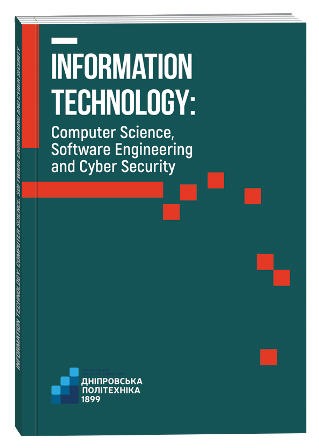ANALYSIS OF EXISTING METHODS AND SOFTWARE TOOLS FOR OPTIMIZING LOGISTIC PROCESSES IN FREIGHT TRANSPORTATION
DOI:
https://doi.org/10.32782/IT/2024-1-1Keywords:
methods, software tools, logistics, freight transportation, information technology, internet of things (IoT), decision-making.Abstract
This article is devoted to the study of methods and software tools for optimizing logistic processes in the field of freight transportation. The goal of the research was to research modern methods that utilize information technology, such as supply chain management (SCM), tracking and tracing, and the use of the internet of things (IoT). The methodology of analysis and classification of optimization methods consists in a detailed consideration of the principles of their operation, advantages and disadvantages, examples of use in specific services.The article reveals the concept of using SCM systems, their history, main purpose, the difference between Supply Chain Planning (SCP) and Supply Chain Execution (SCE) subsystems, the modern implementation of this system using information technology, and its operation on specific services. The method of cargo tracking, its main stages, technical implementations, particularly using radio frequency identification (RFID) technology, the advantages of using such systems in freight transportation, as well as the principle of operation based on existing technologies and services, are described. Additionally, an analysis of the use of the Internet of Things (IoT) technology in the field of freight transportation was conducted, possible applications are considered, the advantages of these technologies are described, and their operation is demonstrated using existing systems. The scientific novelty of the results obtained in the work consists in the development of an understandable and convenient system of classification of modern methods of optimization of logistics processes, as well as the provision of comprehensive information, with examples, for a basic understanding of these processes. The obtained data can be a starting point for further, in-depth research in the field of application of information technologies in freight transportation. Conclusions. As a result of the research, it has been established that the application of these methods can improve the following efficiency indicators of logistic processes: speed of operations, decision-making speed, accuracy of risk and demand forecasting, controllability and coordination of actions of all participants in transportation, and reduction of financial costs. These optimization methods allow for better control over all stages of transportation, real-time monitoring, which in turn, will reduce the risks of force majeure situations on the road, and also provide an opportunity to collect data about the trip more qualitatively for better planning of subsequent trips.
References
Mentzer J.T., DeWitt W., Keebler J.S., Min S., Nix N.W., Smith C.D. Defining supply chain management. Journal of business logistics.Volume 22, № 2. 2001.
Lambert D. M., Cooper M.C. Issues in supply chain management. Industrial Marketing Management, 65–83p. 2000.
Davis T. Effective supply chain management. Sloan Management review. Volume 34, № 4. 1993.
Лисак О.І., SCM-системи як засіб автоматизації управління постачанням. Збірник наукових праць Таврійського державного агротехнологічного університету імені Дмитра Моторного. 2022. Вип. 1. С. 125–132.
Jijun Xing. An Intelligent Logistics Tracking System Based on Wireless Sensor Network. International Journal of Online Engineering. Volume 14, № 1. 2018.
Kwaśniowski S, Zając P. Tracing and tracking using RFID tags in logistic systems of transport and storage. Archives of transport system telematics. Volume 6, № 4. 2013.
Shamsuzzoha, Petri T. Helo. Real-time Tracking and Tracing System: Potentials for the Logistics Network. International Conference on Industrial Engineering and Operations Management. 2011.
Yangke Ding, Mingzhou Jin, Sen Li, Dingzhong Feng. Smart logistics based on the internet of things technology: an overview. International Journal of Logistics Research and Applications. Volume 24, № 4. 2020.
Колешня Я.О., Кравець А.І. Інтернет речей у логістиці. ІІ Міжнародна науково-практична конференція «Бізнес, інновації, менеджмент: проблеми та перспективи».2021. С. 262–263.
Багрій В.В., Граф М.С. Огляд методів та програмних засобів оптимізації логістичних процесів у галузі вантажних перевезень: тези доп. VI всеукраїнської науково-технічної конференції «Компʼютерні технології: інновації, проблеми, рішення». Житомир, 2023.
Gartner IT glossary. URL: https://www.gartner.com/en/information-technology/glossary/. Дата звернення (11.12.2023).
Cooper, M. C., Lambert, D. M., and Pagh, J. D.: Supply Chain Manage- ment: More Than a New Name for Logistics. The International Journal of Logistics Management 8(1), 1–13 (1997).
Davenport, T. H.: Process Innovation–Reengineering Work through Infor- mation Technology. Harvard Business School Press, Boston, Massachu- setts, 1993.
Transporeon group official site. URL: https://www.transporeon.com/en/. Дата звернення (09.12.2023).
ABM Inventory official site. URL: https://abmcloud.com/en/abm-soft/abm-inventory/. Дата звернення (09.12.2023).
Blue yonder official site. URL: https://blueyonder.com/solutions. Дата звернення (09.12.2023).
Glossary of Trimble Transport & Logistics. URL: https://www.trimbletl.com/glossary_term/track-andtrace-system/. Дата звернення (25.12.2023).







